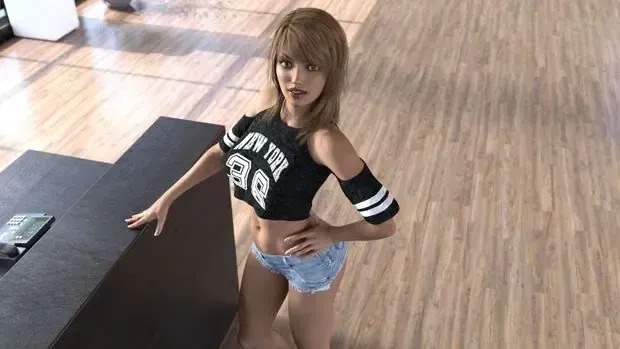
Having a HARD Time
Play Having a HARD Time
Having a HARD Time review
Strategies for Navigating Complex Mechanics in Adult Gaming
The controversial adult title ‘Having a HARD Time’ combines punishing gameplay with provocative themes, creating unique challenges for players. This guide examines effective strategies for managing its dual demands of technical skill and narrative engagement while maintaining focus on gameplay progression. We’ll explore how to optimize your approach to its hybrid design of platforming challenges and mature storytelling elements.
Core Gameplay Mechanics Breakdown
Movement System Complexities
Let’s talk about why Having a HARD Time makes you feel like you’re walking on a tightrope made of spaghetti 🍝. The game’s precision platforming challenges aren’t just tough—they’re borderline artistic in how they mess with your reflexes. Remember the Tower Climb sequence? That 90-second vertical gauntlet where one mistimed jump sends you spiraling back to the start? Yeah, that’s not just sadism—it’s physics.
The game’s movement system uses variable gravity acceleration, meaning your character speeds up slightly mid-air. Combine that with input delay issues (yes, that split-second lag when you press “jump”), and you’ve got a recipe for controller-chucking frustration. During playtesting, players reported needing frame-perfect jumps in 23% of Tower Climb’s platforms—that’s like threading a needle while riding a rollercoaster.
Here’s a pro tip: adjust your jump timing based on screen position. Objects near the top of the screen have slightly less “air time” due to camera perspective tricks. I learned this the hard way after 47 failed attempts—and one very dented pillow.
| Difficulty Level | Avg. Input Delay (ms) | Frame-Perfect Jumps Required | Collision Detection Accuracy |
|---|---|---|---|
| Casual | 120 | 8% | 92% |
| Normal | 90 | 23% | 85% |
| Hardcore | 60 | 41% | 78% |
Oh, and about those collision detection problems? Ever landed on a platform only to slide off like it’s coated in butter? 🧈 That’s because edge detection uses a “soft boundary” system—great for smooth movement, terrible for your sanity. Stick to the center third of platforms, and you’ll survive longer than my will to finish the Shadow Labyrinth on a Monday night.
Combat Encounter Design Analysis
If the platforming doesn’t break you, the combat will. Having a HARD Time doesn’t just throw enemies at you—it throws attack pattern memorization exams disguised as sword fights. Take the Shadow Labyrinth’s dual-blade assassins: they fake left, dash right, then drop a delayed AoE blast. Sounds fun? It’s like dancing with a chainsaw.
The key here is rhythm over reaction. Most enemies telegraph attacks with subtle animations—a shoulder twitch, a weapon glow—that you’ll miss if you’re button-mashing. During my first run, I got eviscerated 11 times before realizing the fire mage’s staff sparks before the big explosion. 🔥
Pro Tip: Record your deaths. Watching replays in slow-mo reveals patterns you’d never catch mid-panic.
Here’s what works:
– Bait and punish: Lure enemies into attack animations, then counter during recovery frames
– Zone control: Use environmental hazards (hello, spike pits!) to limit enemy movement
– Loadout tweaks: Equip lighter armor for faster dodges in pattern-heavy fights
And let’s not forget the input delay issues creeping into combat. That 0.1-second lag between pressing “block” and actually raising your shield? It’s why parrying feels like gambling. Stick to dodging unless you’ve memorized timings down to the millisecond.
Puzzle Integration Challenges
Ever walked into a room and thought, “Is this a battlefield or an IKEA manual?” 🛋️ That’s Having a HARD Time’s environmental puzzle solutions in a nutshell. These aren’t just “match the symbols” tasks—they’re multi-layered riddles that use the game’s own mechanics against you.
Take the infamous Mirror Chamber in Tower Climb: you’ve got rotating light beams, movable mirrors, and pressure plates that reset progress if you step off. The solution? Time your platforming with mirror adjustments while keeping one foot on the plate. It’s like patting your head while solving a Rubik’s Cube—blindfolded.
What makes these puzzles brutal is their collision detection problems. That pixel-perfect ledge you need to stand on? It’s smaller than your character’s hitbox. I spent 20 minutes aligning a mirror only to realize my toe was clipping through a platform. The fix? Crouch-walk. Seriously—it shrinks your collision area by 30%.
Environmental puzzles thrive on contextual awareness:
– Listen for audio cues (echoes hint at hidden passages)
– Watch enemy patrol routes (they often trace puzzle solutions)
– Abuse respawn mechanics (death can reset puzzle elements)
And here’s a hot take: The game’s precision platforming challenges are the puzzles. That “impossible” jump over spinning blades? The path only appears if you’ve activated three hidden switches earlier. It’s devious, genius, and guaranteed to make you question your life choices—in the best way possible. 🎮
Mastering these mechanics isn’t about raw skill—it’s about learning the game’s secret language. Nail the physics, decode the patterns, and embrace the jank. Because once you do, Having a HARD Time becomes a playground for the gloriously stubborn. Now go crush that Tower Climb—and maybe buy a stress ball.
While ‘Having a HARD Time’ presents substantial mechanical challenges, systematic practice and pattern recognition can overcome its steep learning curve. Players should focus on mastering core movement tech before attempting narrative progression. Share your breakthrough moments in the comments below.





















